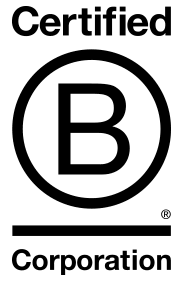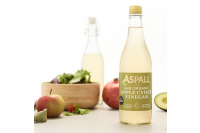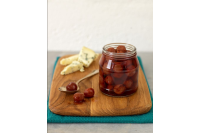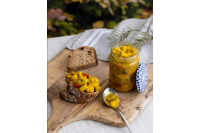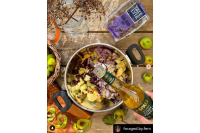Aspall
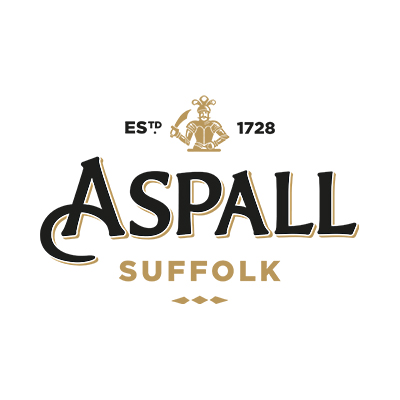
Aspall
Aspall's vinegars are the splash of ‘extra’ everyone can add to the ordinary. Whether in the Aspall Vinegar Barn or with their partners in Spain and Italy, their signature flavour, process and experience is squeezed into every drop. All so that their vinegars bring out the best in even the simplest dishes and drinks.
Attributes
- Ambient
- Midlands, East Anglia
Vinification is a naturally occurring process; we have all experienced a bottle of wine going “vinegary” in the kitchen if left too long, indeed, there are many people who produce their own vinegar by such methods.
However, in most cases, the natural vinegar forming bacteria – acetobacter – don’t convert all the alcohol to acetic acid, and the two then chemically react with one another to form ethyl acetate (smells like nail polish remover!). A key factor in the fermentation of great vinegar is therefore ensuring as much of the alcohol is converted to acetic acid as possible, and in order to do this it is necessary to have an acetifier. Essentially, an acetifier is a large tank or tower; it is temperature controlled – acetobacter have a tendency to get a little over excited during a fermentation, and such is their frenzy they can overheat and die. The acetobacter also need a ready supply of oxygen pumped through the tank to keep fermenting, and this is introduced to the fermentation as tiny bubbles.
John Chevallier Guild created his own fermenter to make vinegar in a totally unique way.
In the 1970’s, John Chevallier Guild pioneered the utterly unique trickle feed Marjoribanks (pr Marchbanks) Method, a process Aspall used to ferment their Organic Cyder Vinegars for almost 40 years.
Today, they use the industry standard batch method Frings Acetator. Whilst they ensure as much of the alcohol as possible is converted to acetic acid, in truth it is impossible to remove all the alcohol and there will always be a tiny residual amount, but not to a level that affects taste adversely. Their cyder and wine vinegars contain less than 0.3% alcohol.
Why stock Aspall?
- Made from high quality ingredients
- Apples grown in Aspall's own orchard
- Beautifully designed bottles
- -
- 7 ate 9
- Aagrah
- Adios Plastic
- All Dressed Up
- All Sorts of Liquorice
- All Things Butter
- Aluna Coconut
- Amundsen
- Anna's
- Anthon Berg
- Antica Amaretteria
- Aqua Carpatica
- Ardens
- Artisan Drinks
- Ask Mummy & Daddy
- Aspall
- Awfully Posh
- Baileys
- Bakedin
- Balsamico
- Banhoek Chilli Oil
- Barbers
- Bath Soft Cheese
- Be:Loved Pet Products
- Beanies Coffee
- BEAR Fruit
- Beech's
- Belazu
- Belfine
- Belvoir
- Bensons Chilly Billy
- Berringa
- Bertagni
- Bertha's Pizza
- Billington's
- Billington's Gingerbread
- Billy Franks
- Bini
- Bio D
- Biomel
- Biona
- Biotiful Gut Health
- Black Bee Honey
- Black Liquorice Co.
- Blackthorn Salt
- Blanco Nino
- Bloody Drinks
- Bold Bean
- Bonds
- Bonne Maman
- Booja
- Booja Booja
- Border Biscuits
- Borgo de Medici
- Borgo de' Medici
- Borough Broth
- Botham's of Whitby
- Botivo
- Bottle Up
- Bower Collective
- Bowser Leaf
- Boynes
- Braes o Gowrie
- Breeder Celect
- Brew Tea Co
- Brickell's Ice Cream
- Brilliant Gin
- British Polo Gin
- Broken Clock Vodka
- Brown Bag Crisps
- Bruce
- Buderim Ginger
- Buiteman
- Burnside Brewery
- Buttermilk
- Buxton Pudding Company
- Cafe Pocco
- Cafedirect
- Cakesmiths
- Calder's Kitchen
- Cambrook
- Camp
- Can Bech
- Candy Kittens
- Canvino
- Cartmel
- Carton Water by Water Works
- Casa Firelli
- Casa Modena
- Casalinga
- Catherine's Originals
- Cavendish & Harvey
- Cawston Press
- Celtic Marches
- Certo
- ChalkStream
- ChariTea
- Charlie & Ivy's
- Cheeky Nibble
- Cheesies
- Chef du Chocolat
- Cheshire Cheese
- Cheshire Cheese Company
- Chewdles
- Chiltern Cold Pressed
- Chimac
- Chimilove
- Chiostro di Saronno
- Chloes
- Choc on Choc
- Chococo
- Chocolate Craft
- Churchill's Confectionery
- Churchill's Confectionery Ltd
- Clarence Court
- Clarks
- Clearspring
- Clotton Creamery
- Cobble Lane Cured
- Cock & Bull
- COCO Chocolatier
- Cocoa Loco
- Cocoba
- Coffee Dunkers
- Coldpress
- Cole's Puddings
- Confiletas
- Conker Spirit
- Cooks & Co
- Coolmore
- Cornish Sea Salt
- Cotswold Fudge Co
- Cotswold Gold
- Cotswold Granaries
- Cotswold Meringues
- Cox&Co.
- Craft & Crumb
- Craft Your Own
- Crespo
- Cricket St Thomas
- Cropwell Bishop
- Crosta & Mollica
- Crosta Mollica
- Crumbs Brewing
- Curds & Croust
- Daioni
- Dalla Costa
- Dalston's
- DANDS
- Danny's
- Darrell Lea
- Dash Water
- Days Brewing
- Dean's
- Dell'Ugo
- Delphi Foods
- Denzel's
- Desobry
- devOATed
- Dewkes Snacks for Dogs
- Diddly Squat
- Diforti
- Dino's
- Divine
- Divine Chocolate
- Dog By The Hob
- Doggy Baking Co
- Doisy & Dam
- Dolcital
- Dot Dot Bubble Tea
- Double Dutch
- Double Dutch Drinks
- Doves Farm
- Dr Will's
- Drivers
- DRTY Drinks
- Due Vittorie
- DukesHill
- Eager Drinks
- Easy Bean
- Eat 17
- Eat Real
- Eco Green Living
- ecoLiving
- Ecozone
- Edinburgh Gin
- EDMUNDS Cocktails
- Elegant & English
- Elizabeth Shaw
- Ella's Kitchen
- Emily Crisps
- Emily Seaweed
- English Cheesecake Company
- English Tea Shop
- EPIC
- Esplosivo
- Famous Names
- Farmhouse Biscuits
- FATSO
- Feletti
- Fen Farm Dairy
- Fentimans
- Fermary
- Fever
- Fever Tree
- FieldGoods
- fiid
- Firefly
- Fish4ever
- Fix8 Kombucha
- Flawsome!
- Flower & White
- FoieGood
- Folkington's
- Foraging Fox, The
- Forest Feast
- Foresta
- Forno Bonomi
- Franklin & Sons
- Freddie's Farm
- Free & Easy
- Freee
- Freestar
- Freja
- Friends
- Fruits of the Forage
- Furniss Love Cookies
- Future Candy
- Gadeschi
- Galipette
- Garofalo
- Gåva Gifting
- Gavottes
- Geo Watkins
- Gingerbread Kitchen
- Glebe Farm
- GNAW
- Gnaw Chocolate
- Goats of the Gorge
- Golden Hooves
- Good & Proper Tea
- Good Phats
- Goodchap's
- Gordon Rhodes
- Gourmet du Village
- Gran Luchito
- Grandma Wild's
- Grate Britain
- Green Cuisine
- Greens & Greetings
- Greens Glastonbury
- Grey Poupon
- Gusto Organic
- Gusto Organic Ltd
- Gymkhana
- H!P Chocolate
- Hackney Gelato
- Hadji Bay
- Hampshire Cheese Co
- Hansel
- HAPPi
- HAPPi Choc
- Harris and James
- Harrogate Water
- Harry Brompton's London Ice Tea
- Hasslacher’s
- Hattiers Rum
- Hawkshead Relish
- Hawkstone
- Hazer Baba
- Hebridean Baker
- Hedgepig
- Hedonist Bakery
- Henderson's Relish
- Herby Hog
- Higgidy
- Hilltop Honey
- Hippeas
- Hitzkopf
- Hive Mind
- Hodmedod's
- Hogs Back Brewery
- Holdsworth
- Holdsworth Chocolates
- Holmes Bakery
- Holy Cow!
- honestfolk
- Honeyrose
- Hoopers
- HOP'T Sauce
- Howdah
- Hullabaloos Drinks
- Imaginative Cuisine
- Ines Rosales
- Infinity Brands
- Isigny St Mere
- Island Bakery
- Islands Chocolate
- It's Soya Good by Organico
- It´s Caramel
- James White
- JD’s Hot Honey
- Jealous Sweets
- Jelly Belly
- Jimmy's Iced Coffee
- Jo Deakin
- Joe & Seph's
- Joe Tea
- Jörg Geiger
- Joseph Heler
- JOYBOX
- Joypots
- Jude's
- Jude's Ice Cream
- Jules Destrooper
- Julie Dodsworth
- Kabuto Noodles
- Kallo
- Karine & Jeff
- Kent & Fraser
- Keto Hana
- Kikkoman
- kin + deum
- Kin Vodka
- Kind Bag
- Kinda Co
- Kirkjuvagr
- Klepper & Klepper
- Kooky
- Kopernik
- Kuhne
- LA Brewery
- La Drogheria
- La Mare Wine Estate
- La Perruche
- Labre's Hope
- Laithwaites
- Lakeland Artisan
- Lakes Distillery, The
- Lambertz
- Laughing Dog
- Lava Cheese
- Leksands
- Lemonaid
- Leone
- Les Chevaliers d'Argouges
- Lily O'Brien's
- Lir Chocolate
- Little Beast
- Little Beau Sheep
- Little Pasta Organics
- Little Pod
- Little Soap Company
- Little's
- Little's Coffee
- LittlePod
- Living Things Soda
- Loacker
- Loison
- LoneWolf
- Long Tail
- Longman
- Lost Sheep Coffee
- Lottie Shaw's
- Lotus
- Love Cocoa
- Love Corn
- Love Sum Dumplings
- Lucky Saint
- Lucy Bee
- Lucy's Dressings
- Lumberjaxe
- Luscombe Drinks
- Lyme Bay Winery
- Maclean's Highland Bakery
- Macneil's Smokehouse
- Made For Drink
- Maison De Florentins
- Malaco
- Mallow & Marsh
- Mama Buci
- Mamma Emma
- ManiLife
- Manomasa
- Marabissi
- Marleybones
- Marshfield Farm Ice Cream
- Mary Berry's
- Mash Direct
- Mattarello
- Mauri
- Mawson's
- Mazzetti
- Medical Supermarket
- Meg Rivers Bakers of Happiness
- Mellow Yellow
- Mermaid
- Mighty Fine
- Miller's
- Miller's Baker & Barista
- Miller's Elements
- Miniml
- Miss American Pie
- Mister Free'd
- MOJU
- MOMO Kombucha
- Mondovino
- Monin
- Montezuma's
- Montezuma's Chocolates
- Monty Bojangles
- Mother Root
- Motif
- Mr Filbert's
- Mr Filberts
- Mr Fitzpatrick's
- Mr Organic
- Mr Stanley's
- Mr Trotter's
- Mrs Crimbles
- Mrs Tilly's
- Muraglia
- Mutti
- My Favourite Bear
- Mydflower
- N & D Walsh
- Naksha
- Nando's
- Native Snacks
- Natural & Noble
- Natural Candy Shop
- Neat
- Nettlebed Creamery
- Nevis
- Nice
- Nice Rice
- NMK
- No Fairytales
- NOBL WATR
- Nojo
- NOJO x holy carrot
- Northern Pasta Co.
- Nougat Chabert & Guillot
- Noveltea
- Nudie
- Oat Avenue
- Odysea
- Officina Nobili Bonta
- Old Hamlet Wine & Spice
- Old Hardisty
- Olina's Bakehouse
- OLLY's
- Ombar
- OMGTea
- One Water
- ONiT
- Only
- ONSURI
- Opies
- Orexis
- Organico
- Organics
- Original Biscuit Bakers
- Orkney Bakery
- Oryx Desert Salt
- PACK'D
- Pact Coffee
- Paddington Bear
- Panificio Bo
- Pappadkis
- PARK LiFE
- Parmareggio
- Pate Pour Vous
- Patteson's Original
- Patum Peperium
- Pea Green Boat
- Peace &
- Pegoty Hedge
- Pelagonia
- Peppersmith
- Percy's
- PerfectTed
- Perry Court Farm
- Perry's Cider
- Persis
- Pertzborn
- Peter's Yard
- Petits Grecs
- Pinkster
- Pip & Nut
- PIP Organic
- Pipers
- Plamil
- Pointer
- Popcorn Kitchen
- Popcorn Shed
- Porter
- Pots & Co
- Potts
- Potts'
- Powerbeärs
- Pretzel Pete
- Primrose's Kitchen
- Prodigy
- Proper
- Proper Nutty
- Pukka
- Pureety
- Qcumber
- Quaranta
- Ramus Fresh
- Random Harvest
- Raspberry Blossom
- Rayners
- RBG Kew Preserves
- Re:Nourish
- REAL
- Rebel Kitchen
- Remedy
- Renegade Brewery
- Revibed Drinks
- Rhythm 108
- Richard Hammond
- Ridgeway Brewing
- RiSE Coffee Box
- Rivoltini
- RJ's Licorice
- Roastworks Coffee Co.
- Rocky Mountain
- Rodda's
- Rogue
- Ross & Ross Gifts
- Rubies in the Rubble
- Rude Health
- Sauce Shop
- Savoursmiths
- Savyll
- Scoop's Ice Cream for Dogs
- Scrumbles
- Scrumble’s
- Scrumshus Premium
- Seafood & Eat it
- Seedball
- Seep
- Seep Living
- Selsley
- Serious Pig
- Shaken Udder
- Shaken Udder Ltd
- Shandy Shack
- Sharp & Nickless
- Shipton Mill
- Shortbread House of Edinburgh
- Shortbread House of Edinburgh Ltd
- Silver Crane
- Silver Spoon
- Simon Weaver
- Simply Delicious Cake Co
- Single Variety Co
- Sipsmith
- Slabs Crisps
- Slattery
- Sloane's Hot Chocolate
- Smith & Lewis
- Smith & Sinclair
- Snaffling Pig
- Snowdonia
- Soda Folk
- Soffle's
- Some Grub
- Sorini
- Specialite Locale
- Spencerfield
- Spice Kitchen
- Spice Pots
- Spicentice
- Spooners
- Spruce
- Squeaky Bean
- Stackable Pancake Co.
- Stag Bakeries
- Stephan Destrooper
- Stockan's Oatcakes
- Stockley's
- Stockleys
- Stokes
- Strong Roots
- Sublime Butter
- Summerdown
- Summerdown Mint
- Sunita
- Sunrise Patisserie
- Superfoodio
- Supper Club
- Surreal
- Sweet FA Gluten Free
- SweetDoughThings
- Sweets in the City
- Taste of Game
- Taylor & Colledge
- Taylors
- Teapigs
- Tempus
- Teoni's
- Terre dei Trulli
- Thanks Plants
- The Barking Bakery
- The Berry Juice Company
- The Bottled Baking Co
- The Brandy Snap Co
- The Cheeky Panda
- The Cheshire Cheese Co
- The Cocoabean Company
- The Coconut Collaborative
- The Collective
- The Coolives
- The Curators
- The Curry Sauce Co
- The Drinks Bakery
- The Estate Dairy
- The Farmers Son
- The Fresh Fish Shop
- The Fresh Pasta Company
- The Garlic Farm
- The Glorious Mess
- The Good Zest Company
- The Great Australian Licorice Company
- The Happy Pear
- The Jelly Bean Factory
- The Jerk House
- The Mallows
- The Original Baker
- The Original Black Garlic
- The Original Cake Company
- The Original Chicken Crackling
- The Pilchard Works
- The Recycled Candle Company
- The Snaffling Pig
- The Spice Sultan
- The Treat Kitchen
- The Uncommon
- The Yorkshire Pasta Company
- Thomas Fudges
- Three Mills
- Thursday Cottage
- Tideford Organics
- Tims Dairy
- Tiptree
- Tony's Chocolonely
- Torres
- Trash & Treasure
- Tregroes Waffles
- Trip
- TrueStart Coffee
- TruffleHunter
- Trustin
- Turtle
- Two Farmers
- TyNant
- Uncle Joe's Mint Balls
- Unearthed
- Union
- Unpackaged
- UP
- Urban Fruit
- Vadasz
- Van Strien
- Vecchio Mulino
- Vent for Change
- Very Lazy
- Vet's Kitchen
- Village Maid
- Vitacore
- Vivani
- Von Der Heide
- Walkers Nonsuch
- Walkers Nonsuch Limited
- Walkers Shortbread
- Wally and Whiz
- Warner's Distillery
- Wash With Leaf
- Welshhomestead Smokery
- Wessex Mill
- What a Date®
- Whisky Sauce Co
- Whitakers
- White Heron
- White Lake
- White Mausu
- Whitebox Cocktails
- Who Gives a Crap
- Wholey Moly
- Wicklein
- Wild Island Ltd
- Wild Thingz
- Wildflower Wishes
- Wildlife World
- Williams Handbaked
- Williamson Tea
- Willie's Cacao
- Willys ACV
- Wilton London
- Wilton London Ltd
- Witchmark
- Woolf's Kitchen
- World of Sweets
- World of Zing
- Wye Valley Meadery
- Xochitl
- Yeo Valley
- Yummycomb
- Zaini
- ZaraMama
- Zaytoun

